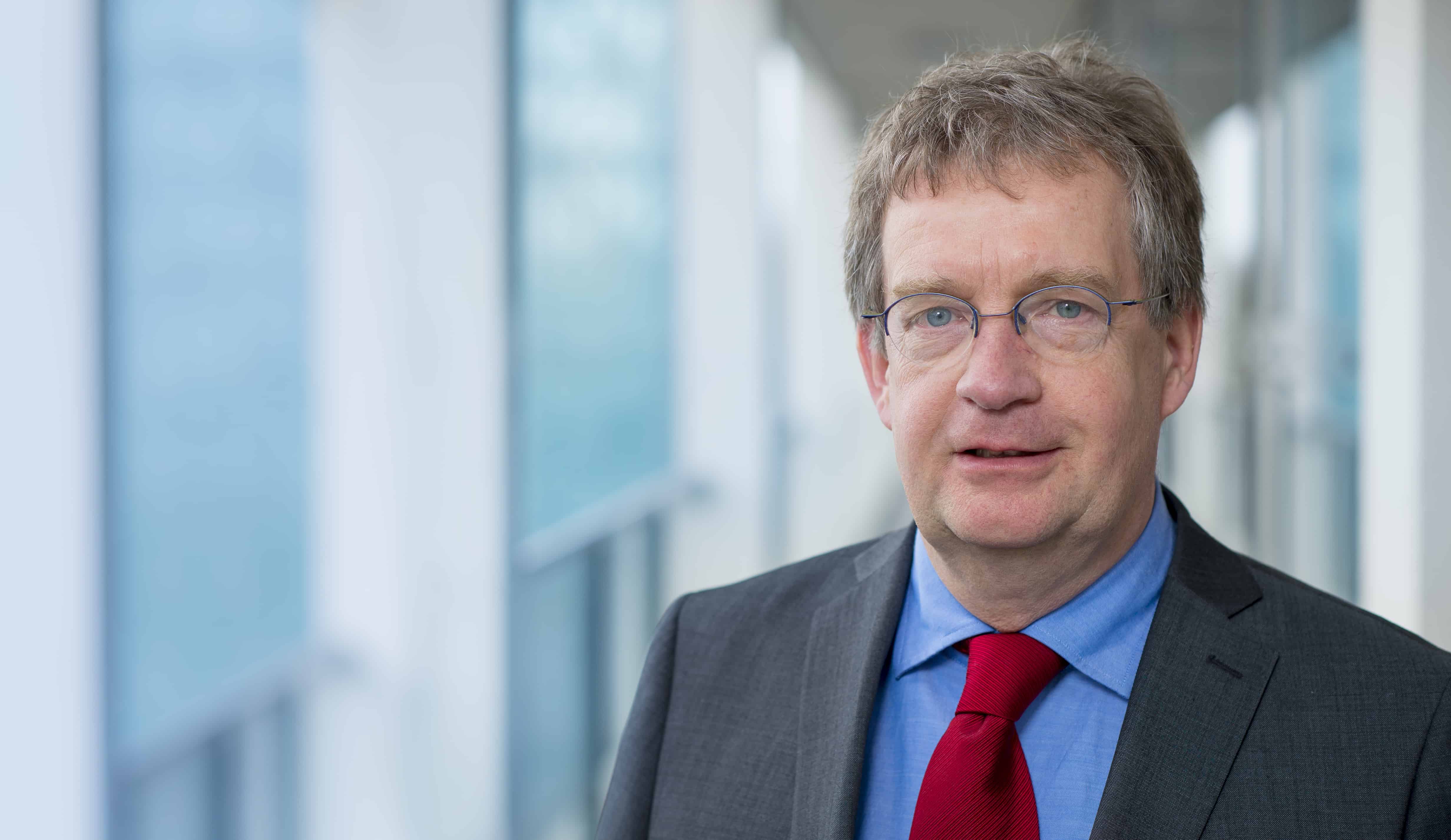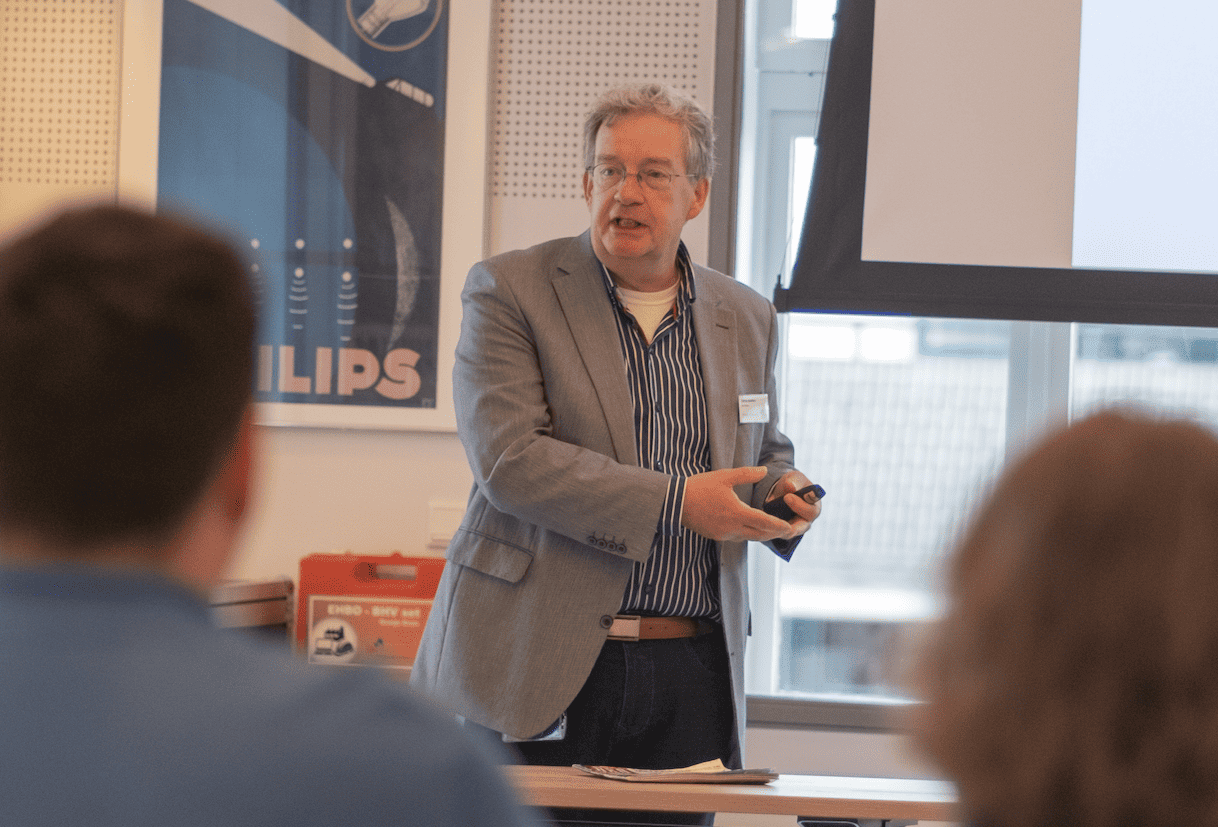
A workshop in the afternoon, and a Thingscon Salon in the evening: on Friday July 8 all was prepared to find the Smart Citizen. Because one thing was really clear to the organisers of these Internet-of-Things meetups: preparing the Smart City can only be done by building a Smart Society. And for this, obviously, smart citizens are needed.
Next week, a new project by De Staat van Eindhoven, hopes to find answers to lots of questions about the role and wishes of the citizens concerning the smart city they would want to start living in. But Iskander Smit tells us it’s not the first the people of Eindhoven have been asked these kind of questions. In fact, a ‘thinkathon’ in Woensel West last year already found out that the average citizen isn’t looking for efficiency, but moreover wants to find a better contact with the neighbors. “All the answers we found in a two day accelerator were related to the social character of the neighborhood.”
When Lorna Goulden takes the floor, it’s all about LoraWan, the alternative network. Thanks to a Kickstarter campaign, The Things Network is starting to cover whole cities. “One gateway has a range of 10 kilometers, so not many of them are needed to cover a city like Eindhoven.” But that’s just the start, Goulden says. “To have a network is one thing. What to do with it is another.”
 Again, it’s not about efficiency, but about sustainability and the quality of life, Goulden says. “We need more meetups, like the workshops in the Desighuis. The collision density between designers, developers and citizens has to grow further. That’s the way to become really smart.” To show part of what can be reached, Lorna Goulden sums up the results of today’s workshop. “We’ve been looking at a way to track bicycles, about geodata visualisation to find the best spots for – for example – yoga, and at ways to connect virtual reality in real reality. Oh, and how about the internet of ducks? A term used by one of the groups to form a community of people near a pond.”
Again, it’s not about efficiency, but about sustainability and the quality of life, Goulden says. “We need more meetups, like the workshops in the Desighuis. The collision density between designers, developers and citizens has to grow further. That’s the way to become really smart.” To show part of what can be reached, Lorna Goulden sums up the results of today’s workshop. “We’ve been looking at a way to track bicycles, about geodata visualisation to find the best spots for – for example – yoga, and at ways to connect virtual reality in real reality. Oh, and how about the internet of ducks? A term used by one of the groups to form a community of people near a pond.”
The good thing about LoraWan, Goulden stresses, is that it’s free. “So there is no business model needed for your creativity. Instead, you can focus on a value model from a human perspective. To make the city a thriving place to live instead of an efficient city.”
The story by Dries de Roeck from the Antwerp bureau Studiodott shows that not all experiments are successful. His trials in the city of Antwerp have concentrated on the question how to construct a more healthy relationship between human and technology. But it’s still work in progress. “The human normally has to adapt to new technology, so now let’s try build a shire instead of a grid.” That’s why his collaborative city co-design platform C3PO has focused on involving the stakeholders. “Finding the right tools and models has cost us a lot of time, and still, they seem to be quite arbitrary. So at one point we decided to just go out and do something.”
But still, De Roeck is not yet where he wants to be. For example, the research he did on user friendly bicycle roads has brought a lot of pictures, but no clear message yet.
In the Rotterdam project Ons Blok, Peter van Waart focuses on empowering the citizen as well. “Try to google ‘smart city’, and it will be very hard to find a picture of a human being. Apparently, that’s how we look at smartness. We have to change that.”
It’s a design challenge, Van Waart says. “If you can bake your own cake, it should also be possible to make your own smart thing.That’s how we can design smart and participatory cities. We have to combine human, urban, and technology to reach an urban interaction design.”
Empowering citizens to use smart technology to make their city is Van Waart’s goal. “A smart city can only be built from bottom up. Every neighborhood will have different solutions. That’s why OnsBlok is trying to enable citizens to create and own their own data. Let’s help people to become more technology and data literate so they can really build the smart city bottom up. It is necessary that people know what happens with their data. Where is it going to, who is using what?”
That’s where Klaas Kuitenbrouwer (“living in Amsterdam, based in Rotterdam, working for Eindhoven”) comes in. Next Monday, he is starting to find the stories behind the data in Eindhoven. For the project De Staat van Eindhoven, he and his team are working with a moveable data studio in Woensel Noord. No answers yet from Kuitenbrouwer. Instead, he has a busload of questions he wants to address to the citizens in Woensel. The answers might help to find the key to reformulating the relation between the municipaility and the citizen. “First we have to find out what important questions are not being asked enough, and what answers just can’t be found in available data. We want to know what ‘smart’ really is. Who uses which technology? Who can take responsibility when the city steps back? What do citizens really want from their city? Which realities are caught in data like the buurtmonitor, and which aren’t? What happens when new kind of data become part of policy and technology?”
Woensel Noord might be translatable, Kuitenbrouwer hopes. “Can it can act as a proxy for a large part of the dutch neighborhoods?”
Next week the datastudio starts its work. “With a bunch of volunteers we are going to get beyond the shout level of the citizens. We’ll take as much time as is needed to get into a conversational mode. That way, we want to explore a wide variety of views and opinions.”
More on the agenda of De Staat van Eindhoven can be found here.









